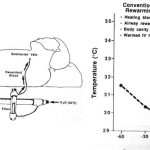For those of you who read the Journal of Trauma, the first issue of 2012 just arrived in the mail. It sports both a new cover design and a title change. For many years, it was just The Journal of Trauma. Then, after 20 years under the editorship of John H. Davis, the name changed to The Journal of Trauma, Injury, Infection, and Critical Care in 1995. This occurred as Basil Pruitt became the new editor.
Now, after 17 years under Dr. Pruitt the Journal has a new editor (Gene Moore) and a new title: The Journal of Trauma and Acute Care Surgery. According to the instructions to authors, the journal continues its focus on trauma, emergency surgery and the care of critically ill patients.
These days, the relationship between trauma and surgical critical care seems self-apparent. The two truly go hand in hand, and most Level I and many Level II trauma centers in the States boast trauma surgeons who are deeply involved in and certified in surgical critical care.
But it wasn’t always this way. An editorial written 20 years ago this month in the Journal by a group of well-known trauma surgeons at Kings County Hospital in Brooklyn lamented the controversy about the two disciplines at that time. There was substantial debate then regarding whether there was even a role for surgical critical care in the world of academic surgery.
Two major trauma organizations, EAST and AAST stepped up and provided a home for research and education in the field. One of the intriguing questions back then was the etiology of organ failure. Unfortunately, the study of critically ill medical patients was not able to answer this question easily, since the exact onset of the inciting factor was not easily recognized. But in trauma, we know exactly when the physiologic insult occurs, making research projects much more productive.
January 1992 marked the beginning of a time when we stopped trying to define what separates trauma and critical. It was the beginning of a period where trauma surgeons reasserted their commitment to total care, including critical care, and were not limited to only technical accomplishments in the operating room.
The new focus and title of the Journal recognizes that acute care surgery embodies many of the same operative and nonoperative management principles as trauma and critical care surgery. But I’m sure that we’ll see a new debate brewing that will be very similar to what occurred 20 years ago.
Reference: Trauma versus critical care: it is time to end the debate. J Trauma 32(1):1, 1992.


